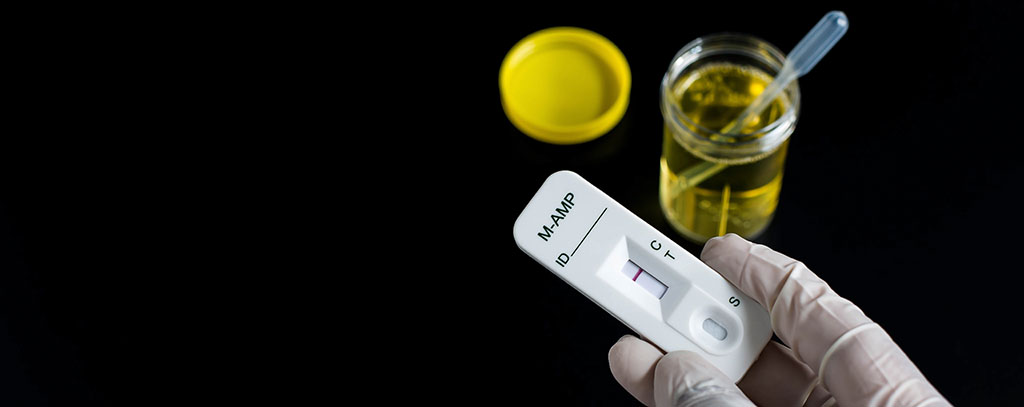


How Long Can an EtG Test Detect Alcohol: Comprehensive Guide
April 16, 2023


How Far Back Does a 10 Panel Drug Test Go? Key Details
April 17, 2023If you're curious about what is an ETG test, you've come to the right place. This blog post will provide an in-depth look at ETG testing, a highly effective and reliable method for detecting alcohol consumption. We'll explore the science behind ethyl glucuronide (ETG) tests and how they differ from other alcohol testing methods.
Throughout this post, we'll discuss the various benefits of using ETG tests, including their accuracy and longer detection window compared to traditional methods. Additionally, we'll cover essential information on purchasing ETG test kits and administering them effectively.
Finally, understanding the results of an ETG test can be crucial for companies implementing drug testing policies. Our discussion will delve into interpreting positive and negative results while considering factors that may affect their accuracy. By gaining a comprehensive understanding of what is an etg test through this blog post, your company can make informed decisions regarding its drug testing procedures.
Table of contents
What is an ETG Test?
An ETG test, also known as Ethyl Glucuronide test, is a highly sensitive and reliable method for detecting alcohol consumption in individuals. This testing technique, which does not involve invasiveness, can detect the existence of alcohol metabolites in urine samples for several days following ingestion. In this section, we will explore the meaning of ETG, its working mechanism and the substances that can be identified by an ETG test.
What Does ETG Stand For?
ETG stands for Ethyl Glucuronide, which is a direct biomarker of alcohol consumption. It is formed when ethanol (the primary component of alcoholic beverages) gets metabolized by the liver and combines with glucuronic acid. The resulting compound - ethyl glucuronide - remains detectable in urine samples long after the effects of alcohol have worn off.
How Does an ETG Test Work?
The ETG test works by identifying traces of ethyl glucuronide present in a person's urine sample through immunoassay techniques or chromatographic methods such as liquid chromatography-tandem mass spectrometry (LC-MS). These tests are designed to specifically recognize and bind to ethyl glucuronide molecules while ignoring other compounds found within the sample. Once bound, these complexes produce measurable signals that indicate whether or not alcohol has been consumed recently.
What Substances Can be Detected by an ETG Test?
- Ethanol: The primary component of alcoholic beverages, ethanol is rapidly metabolized in the liver and can be detected through an ETG test.
- Ethyl Glucuronide (ETG): As mentioned earlier, this direct biomarker of alcohol consumption remains detectable in urine samples for a longer period compared to other tests such as breathalyzers or blood tests.
- Ethyl Sulfate (ETS): Another minor metabolite of ethanol, ethyl sulfate can also be detected using specialized testing methods alongside ETG. However, ETS has a shorter detection window than ETG and is not commonly used on its own for alcohol testing purposes.
In summary, an ETG test offers a highly accurate and reliable method for detecting recent alcohol consumption by identifying traces of ethyl glucuronide present in urine samples. With its longer detection window and non-invasive nature, it serves as an effective tool for companies looking to implement drug testing policies within their organizations.
An ETG Test is a reliable and accurate way to detect alcohol consumption, providing an extended detection window than other tests. As such, it offers numerous benefits that make it a great choice for drug testing supplies.
Benefits of Using an ETG Test
An ETG test offers several advantages over other alcohol testing methods, making it a popular choice for companies looking to purchase drug testing supplies. In this section, we will discuss the accuracy and reliability of results, longer detection window than other tests, and noninvasive testing methodology that make ETG tests stand out.
Accuracy and Reliability of Results
The first benefit is the high level of accuracy provided by an ETG test. This type of test detects ethyl glucuronide (ETG), a direct metabolite of ethanol found in urine. Since ETG is only produced when alcohol has been consumed, its presence indicates recent alcohol consumption with greater certainty than indirect markers like blood-alcohol concentration or breathalyzer readings. Furthermore, because ETG remains detectable in urine for up to 80 hours after drinking alcohol(source), it provides a more extended detection window compared to other methods.
Longer Detection Window than Other Tests
- Breathalyzers: These devices measure the amount of alcohol present in one's breath but can only detect recent consumption within 12-24 hours (source).
- Blood Alcohol Concentration (BAC) Tests: BAC tests require drawing blood from an individual and typically have a shorter detection period ((source).
As a result, ETG tests are more effective in identifying alcohol consumption that may have occurred days before the test.
Noninvasive Testing Methodology
Another advantage of using an ETG test is its noninvasive nature. Unlike blood tests, which require needle sticks and can be uncomfortable for some individuals, urine-based testing methods like the ETG test only require a simple urine sample collection. This makes it easier to administer and less stressful for those being tested. Additionally, since no needles or medical professionals are needed to collect samples, companies can save on costs associated with administering these types of tests.
In summary, when considering where to buy drug testing supplies such as ETG test kits, keep in mind their accuracy and reliability of results, longer detection window than other tests (up to 80 hours), and noninvasive testing methodology that make them an excellent choice for detecting recent alcohol consumption.
The accuracy and reliability of results, combined with the longer detection window than other tests makes an ETG test a beneficial option for companies that need to ensure drug testing is done properly. Additionally, its noninvasive methodology allows for easy collection and storage of samples. When selecting an ETG Test Kit, it is essential to contemplate various elements in order to guarantee you are obtaining the suitable product from a reliable source at an affordable cost.
How to Purchase an ETG Test Kit
Purchasing an ETG test kit is a crucial step in ensuring that your company has the necessary tools for accurate and reliable alcohol testing. This article covers the essentials of acquiring an ETG test kit, including where to purchase one, associated costs and selecting a suitable supplier.
Where to Buy an ETG Test Kit
You can purchase ETG test kits from various sources such as online retailers, medical supply stores, or directly from manufacturers. Some popular options include:
- Halux Diagnostic: A leading provider of drug testing supplies offering high-quality and affordable products.
- Amazon: A well-known online marketplace where you can find a wide range of drug testing supplies including ETG tests.
- Medical Supply Store: An example of a specialized store that offers various medical equipment and supplies including drug testing kits like the ETG test.
Costs Associated with Purchasing an ETG Test Kit
The cost of purchasing an ETG test kit may vary depending on factors such as quantity ordered, brand quality, and supplier pricing policies. Generally speaking,
- A single-use disposable kit typically ranges between $5-$15 per unit.
- Bulk orders often come at discounted rates which could save your company money in the long run if frequent alcohol screenings are required.
Tips for Choosing the Right Supplier for Your Needs
When selecting a supplier for your ETG test kits, consider the following factors to ensure you are making an informed decision:
- Reputation and Reliability: Choose a reputable supplier with positive customer reviews and testimonials. Ensure you get the best quality and customer service by picking a supplier with great reviews.
- Pricing: Compare prices among different suppliers to find one that offers competitive pricing without compromising on quality.
- Product Range: Opt for a supplier that provides a wide range of drug testing supplies, including various types of alcohol tests. This will allow you to easily purchase additional items as needed in the future.
- Returns Policy and Warranty: Ensure the supplier has a clear returns policy and warranty information available so that any issues can be addressed promptly if necessary.
Taking these factors into account when purchasing an ETG test kit will help guarantee accurate results while also saving time, money, and resources for your company's alcohol screening needs.
Making sure you obtain the correct ETG testing apparatus is critical to ensure accurate outcomes. With this knowledge, it's time to move on and learn how to administer an ETG test correctly.
How to Administer an ETG Test
Administering an ETG test is a straightforward process that can be easily conducted in various settings, such as the workplace or at home. This section will guide you through the steps involved in preparing, collecting, and analyzing a urine sample using an ETG test kit.
Preparing the Sample for Testing
- Gather necessary materials: Before starting the testing process, ensure that you have all required materials on hand. These typically include gloves, a sterile collection cup/container, and of course, your ETG test kit.
- Maintain privacy: To ensure accurate results and maintain donor dignity during sample collection, provide them with privacy while they produce their urine specimen.
- Avoid contamination: Instruct donors not to touch the inside of the container or lid when providing their samples to avoid potential contamination.
Collecting the Sample for Testing
- Instruct donor: Ask donors to fill up at least half of their provided containers with urine before sealing it tightly with its lid.
- Determine temperature: To check if there's any tampering attempt like dilution or substitution of specimens by donors', verify whether collected samples are within acceptable temperature range (90-100°F) within four minutes after collection using built-in thermometers present on most cups/containers used for drug testing purposes.
- Label and secure: Label each sample container with appropriate donor information and ensure it is securely sealed before proceeding to analyze.
Analyzing the Sample with the ETG Test Kit
- Dip test strip/cassette: Follow your specific ETG test kit's instructions on how long you should dip its testing device (strip or cassette) into collected urine samples. This usually ranges from a few seconds up to one minute.
- Await results: After dipping, lay down testing devices on flat surfaces while waiting for their respective reaction times as indicated by manufacturers' guidelines - typically around five minutes but could vary depending on brands/models used.
- Read results: Once reaction time has elapsed , carefully read and interpret result indicators displayed on either side of test strips or cassettes . These will show whether tested samples contain alcohol metabolites above established cut - off levels indicating recent consumption .-->
- Document findings: Record all obtained results accordingly in line with company policies or legal requirements surrounding drug/alcohol screening procedures within given settings where tests are conducted.
Note that proper storage conditions must be maintained for both unused ETG kits and collected specimens awaiting analysis. Consult product packaging/documentation provided by chosen suppliers/manufacturers regarding best practices related specifically towards handling/storage aspects associated directly/indirectly alongside usage scenarios involving purchased items like those offered through reputable sources such as Halux Diagnostics extensive range available online via their official website.
Administering an ETG test requires careful preparation and collection of the sample, as well as a thorough understanding of how to interpret results. Understanding the factors that can affect accuracy is essential for obtaining reliable results from an ETG test. Next, it is critical to comprehend the implications of positive and negative outcomes when making choices concerning drug testing materials.
Understanding the Results of an ETG Test
Analyzing the results of an ETG test, we will look at factors that can influence accuracy and discuss false positives and negatives. We will also delve into false positives and false negatives, which are crucial aspects to consider when analyzing test outcomes.
Interpreting Positive and Negative Results
An ETG test result is typically reported as either positive or negative. A positive result indicates that ethyl glucuronide (EtG), a direct biomarker for alcohol consumption, has been detected in the urine sample at levels above the established cutoff threshold. This finding suggests recent alcohol use by the individual being tested.
A negative result means that EtG was not detected in significant amounts or was below the cutoff level, implying no recent alcohol consumption by the person tested. It's essential to remember that a negative outcome does not necessarily guarantee complete abstinence from alcohol but rather signifies no detectable usage within the detection window of approximately 80 hours after ingestion.
Factors That Can Affect Accuracy of Results
The accuracy of an ETG test may be influenced by several factors:
- Dilution: Excessive water intake before providing a urine sample might dilute it, potentially leading to false-negative results.
- Cross-reactivity: Some substances like medications or personal care products containing ethanol might cause interference with EtG testing resulting in false-positive outcomes (source). Always inform your tester about any medication you're taking beforehand.
- Tampering: Attempts to adulterate the urine sample with chemicals or substitute it with synthetic urine can impact the test's accuracy.
Understanding False Positives and False Negatives
A false positive occurs when an ETG test indicates alcohol consumption even though none took place. As mentioned earlier, this outcome might result from cross-reactivity with other substances containing ethanol. In such cases, additional testing methods like blood tests or breathalyzers may be employed to confirm the results.
A false negative, on the other hand, happens when a person has consumed alcohol but receives a negative ETG test result. This situation could arise due to dilution of the urine sample or if alcohol ingestion occurred outside of the detection window (approximately 80 hours).
In conclusion, understanding how to interpret ETG test results and being aware of factors that can affect their accuracy is crucial for both companies administering these tests and individuals undergoing them. By considering potential false positives and negatives in your analysis process, you'll ensure more accurate outcomes while maintaining confidence in your drug testing program.
Frequently Asked Questions
What is the truth about EtG testing?
EtG testing is a reliable and accurate method for detecting recent alcohol consumption. It offers a longer detection window compared to other tests, typically up to 80 hours after ingestion. However, it's essential to consider factors that can affect accuracy, such as dilution or contamination of samples.
What is the purpose of EtG test?
The primary purpose of an EtG test is to monitor abstinence from alcohol in various settings like addiction treatment programs, workplace drug testing policies, legal proceedings involving substance abuse cases, and monitoring individuals on probation or parole.
What can trigger an EtG test?
An EtG test may be triggered by consuming alcoholic beverages or exposure to products containing alcohol like mouthwashes, hand sanitizers, certain medications (e.g., cough syrups), and some foods prepared with alcohol. These substances can result in detectable levels of Ethyl Glucuronide (EtG) in urine samples.
How long can EtG alcohol be detected in urine?
Ethyl Glucuronide (EtG) can generally be detected in urine for up to 24-48 hours after moderate drinking and up to 72-80 hours after heavy drinking. The exact duration depends on factors such as individual metabolism rates and the amount of consumed alcohol.
Conclusion
An ETG test is an effective and reliable tool for detecting the presence of alcohol in a person's system. It can provide accurate results with minimal effort, allowing companies to quickly assess their employees' potential risk factors. With its easy-to-use design and comprehensive testing capabilities, an etg test offers businesses peace of mind that they are taking all necessary steps to ensure employee safety while adhering to industry standards.
Discover Halux Diagnostic's reliable and accurate drug testing supplies to ensure your ETG test results are correct. Trust in our top-of-the-line products for the best protection against any false positives or negatives.





